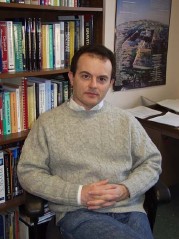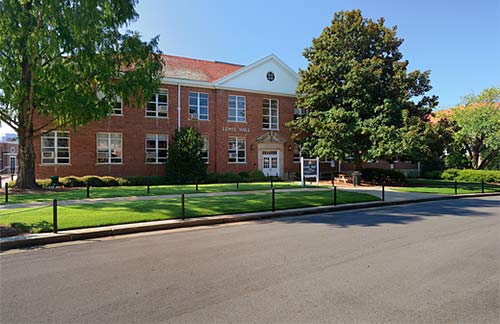February 9, 2016
100 years after Einstein predicted the existence of gravitational waves, the National Science Foundation gathers scientists from Caltech, MIT, and the LIGO Scientific Collaboration to update the scientific community on efforts to detect them.
OXFORD, MS—University of Mississippi students, faculty and staff, as well as science enthusiasts from the Oxford community are invited to join a live viewing event at the auditorium of the Department of Physics and Astronomy on Thursday, February 11, 9:30 a.m., as the National Science Foundation brings together scientists from Caltech, MIT, and the Laser Interferometer Gravitational-Wave Observatory (LIGO) Scientific Collaboration at the National Press Club in Washington, D.C. for a status report on the effort to detect gravitational waves—or ripples in the fabric of space time.
The live broadcast will begin at 9:30 a.m. in Lewis Hall Room 101 preceded by a brief introduction by Lucien Cremaldi, professor and chair of physics and astronomy. Doors will open at 9 a.m.

Katherine Dooley

Marco Cavaglià
As a follow-up to this event, on February 16, at 4 p.m., Katherine Dooley, assistant professor of physics and astronomy, and Marco Cavaglià, associate professor of physics and astronomy, both members of the LIGO Scientific Collaboration, will host a Q&A session about the latest LIGO research at the Department of Physics and Astronomy in Lewis Hall Room 101 and a Science Cafe’ at Lusa Bakery Bistro and Bar, 1120 North Lamar Blvd., in Oxford at 6 p.m. Local press representatives are invited to these events. An evening public lecture is planned for later in February. More details will be posted on the Department of Physics and Astronomy website and the Oxford Science Cafe’ website as they become available.
A special exhibit about LIGO will be on display in the Student Union lobby through the end of February.
LIGO, a system of two identical detectors carefully constructed to detect incredibly tiny vibrations from passing gravitational waves, was conceived and built by MIT and Caltech researchers, funded by the National Science Foundation, with significant contributions from other U.S. and international partners. The twin detectors are located in Livingston, Louisiana, and Hanford, Washington. Research and analysis of data from the detectors is carried out by a global group of scientists, including the LSC, which includes the GEO600 Collaboration, and the VIRGO Collaboration. The University of Mississippi has been a member of the LIGO Scientific Collaboration since 2007.
For additional background about the project, you may be interested in these websites:
LIGO Lab: https://ligo.caltech.edu/ (Observatories: Livingston | Hanford)
LIGO Science Collaboration: http://ligo.org/
LIGO Team at the University of Mississippi: http://ligo.phy.olemiss.edu
Department of Physics and Astronomy: https://olemiss.edu/depts/physics_and_astronomy/
Oxford Science Cafe’: https://phy.olemiss.edu/oxfordsciencecafe/
WHEN: Thursday, February 11, 2016, 9:30 a.m.
WHERE: University of Mississippi Department of Physics and Astronomy, Lewis Hall Room 101

